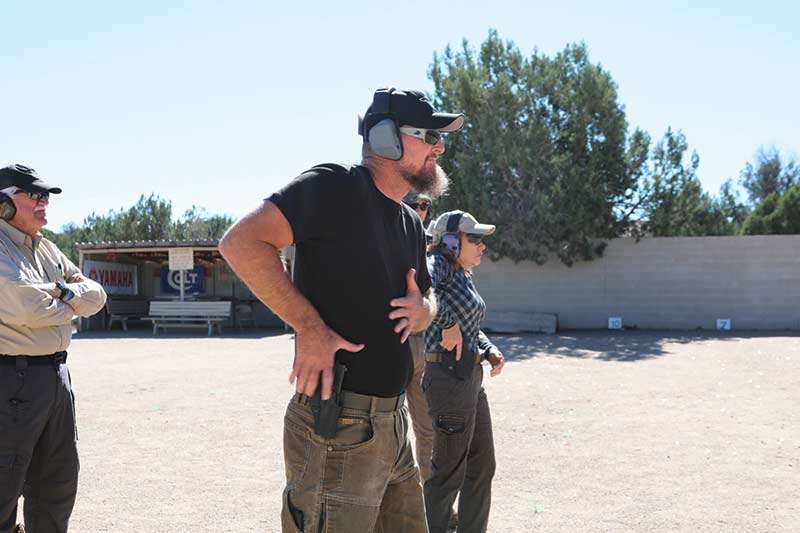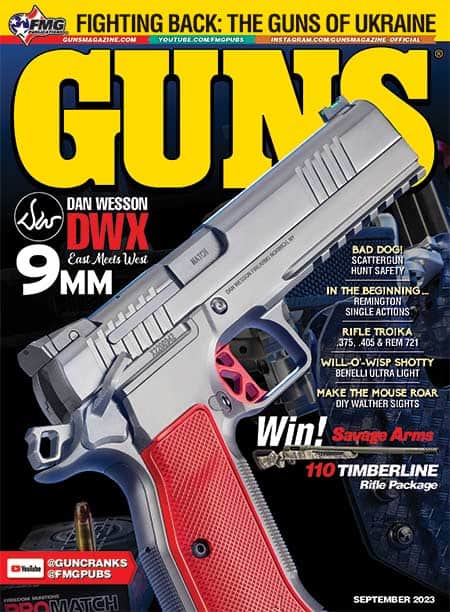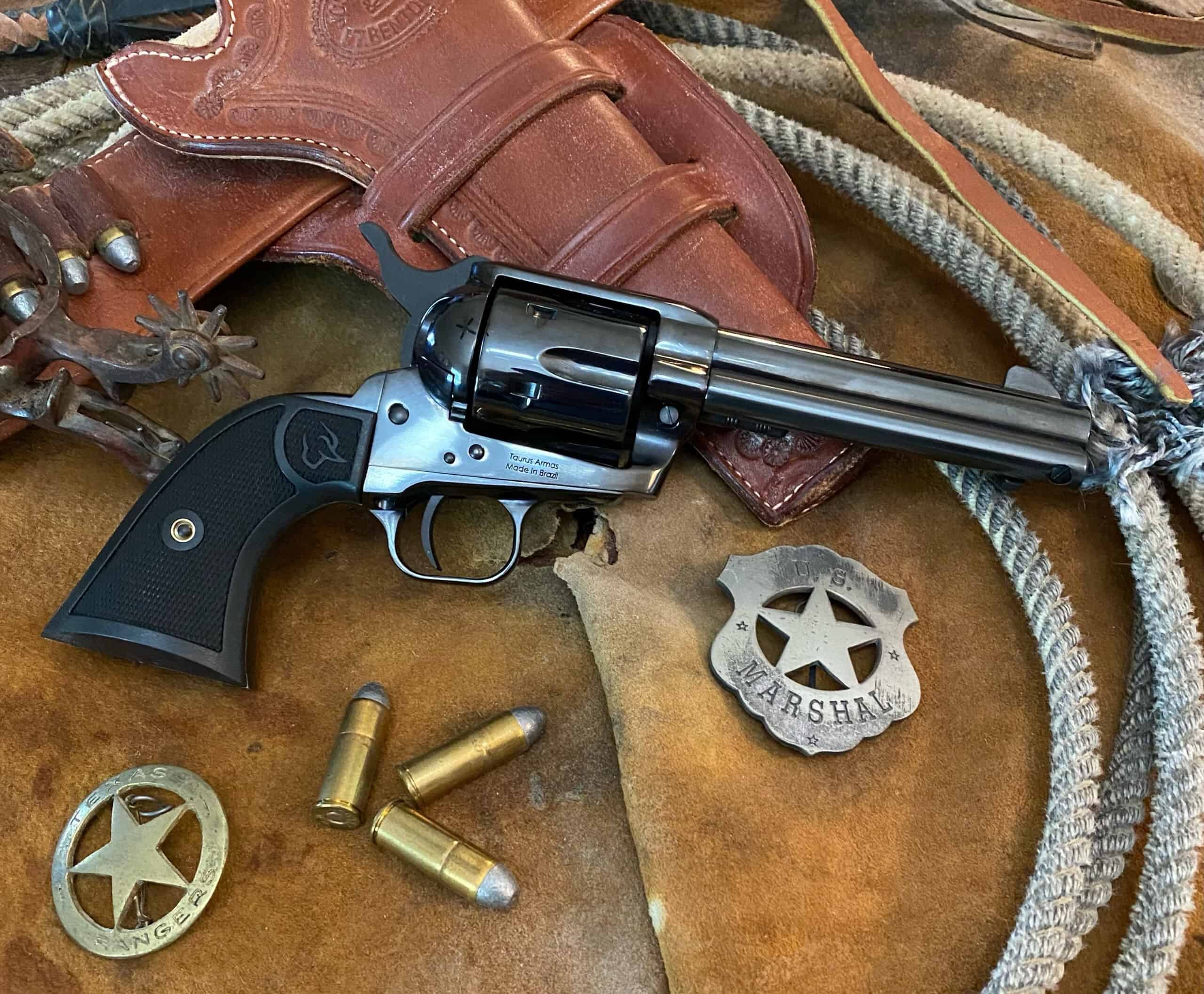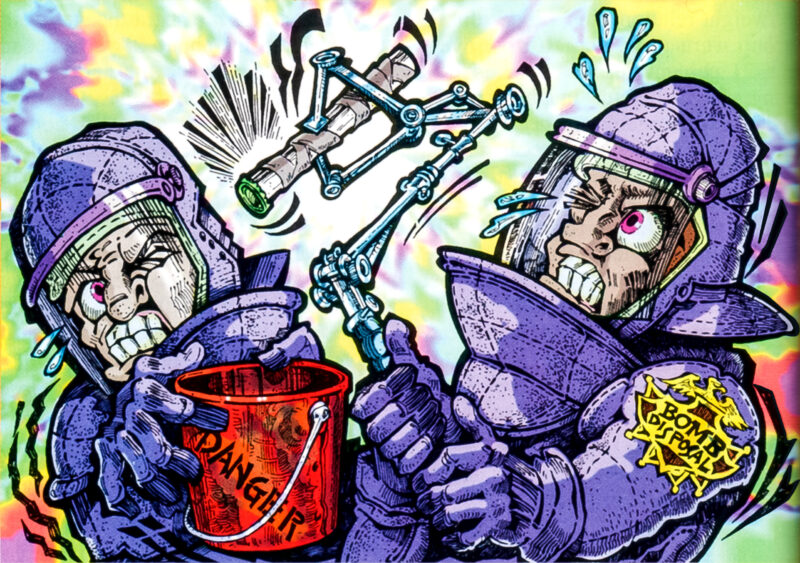“Shoot Faster!”
It Doesn’t Mean What You Think
Have you ever been told by an instructor, friend or even just the guy or gal in the next shooting stall you should “shoot faster”? I am willing to bet this sage advice came after the well-meaning person noticed your amazingly tight shot group placed perfectly over your point of aim on your target. But what did they mean by “shoot faster”? More importantly, how did you translate it into the action needed to shoot faster?
I’ve asked students this question for years and found it is almost universally interpreted as “pull the trigger faster.” Unfortunately, this is the farthest thing from what any competent firearms instructor intends to communicate.
Train For The Fight
Tight, impressive shot groups on your cooperative paper target are great for the ego and fist bumps with your pals. But for most of us, achieving those tight groups takes slower-paced shooting and a focus on marksmanship skills. Don’t get me wrong, working on your marksmanship skills is important. But, when training for marksmanship, you take the time you need to place every round through the same hole.
Don’t confuse marksmanship with the skills needed to end a gun fight. The ability to deliver reasonably accurate, debilitating hits with speed is what wins the day. Once the gun comes out, your attacker will be constantly trying to kill you. Everything you do delaying hits on target creates more time for him or her to shoot you. The kind of speed I’m referring to is determined by your current ability to get your hits faster than the other guy can shoot you.
“Accelerated Accuracy”
I don’t tell students “you can shoot faster” anymore. I’ve found this usually results in the need for another time-honored catch phrase — “quit jerking the trigger!” — which results in confusion. Instead, I teach them how to achieve “accelerated accuracy.”
I explain to students I want them to do everything leading up to the first trigger press in an accelerated fashion. The first shot must be the first hit, as the first hit exponentially increases the odds of survival and success.
As for “jerking the trigger” in this process, you will very likely start jerking the trigger when someone is shooting at you so train for it! Just learn how to jerk the trigger without disturbing the sight picture, by focusing on your grip and trigger control.
Over 20 years of teaching firearms, what I see most often is a student moving through their entire presentation with their trigger finger on the frame of the firearm. This is a must when presenting the firearm to low-ready or in any circumstance other than immediate firing. However, in a gunfight this wastes time.
Students wait until they’ve completed the presentation and have a sight picture, then touch the trigger, which usually disrupts the sight picture. They then take time to reset the sight picture before pressing the shot. This is where the sage advice of “shoot faster” comes into play. For their follow-up shots, they “pull the trigger faster.” The result is always a delayed first shot and, in many cases, non-debilitating hits or even misses for following shots.
Finding the Way
Accelerated accuracy starts with your reaction time to the threat, the presentation of your firearm from the holster and — most importantly — prepping your trigger for the all-important first shot. Remember, we are not talking about drawing your firearm to low-ready because you heard a bump in the night from your living room. We are talking about immediate action in response to someone trying to kill you.
Gunsite teaches a five-step process for the presentation of a firearm. It consists of Grip, Clear, Rotate, Smack and Look. The key to accelerated accuracy on your first shot is related to when you make first contact with the trigger during the presentation. We teach our students to touch the trigger at Smack, where you establish your two-hand firing grip on the firearm with your muzzle (and sights) oriented on the target.
As you move from Smack through Look, you smoothly take up the slack of the trigger until you reach “The Wall” — the point where you feel resistance from the trigger. This allows you to press the trigger as soon as you have an acceptable sight picture on the target. When done correctly, the result is the first shot breaking as you reach full extension in the presentation, or sooner if needed.
The cadence or speed of this process was best described to me by one of my mentors years ago as “Gas – Gas – Coast – Brake.” You should be focused on smooth speed for Grip and Clear (Gas), Rotate and Smack (Gas) then touch the trigger as you establish your two-handed firing grip. You then coast through Look while taking up the trigger slack to the wall. As you achieve your sight picture, you press the trigger and break the shot as you brake. This is what Gunsite doctrine refers to as the “Compressed Surprise Break.”
For follow-up shots, you rely on proper follow-through by managing recoil and muzzle flip with a strong grip, while resetting the trigger and returning to the wall. You reacquire your sight picture as fast as possible and once it is stable, you press the trigger through the wall and repeat as necessary.
“Smooth is Fast” and Accurate
Accelerated accuracy means a sacrifice of tight shot groups for effective hits delivered at a significantly increased tempo. It sounds like “Shoot Faster,” but it’s actually doing everything up to the trigger press faster.
You can’t miss quick enough to win a gunfight, but you can hit slowly enough to lose one. The balance between accuracy and speed is the key. You will improve your first and subsequent shot times, while achieving acceptable accuracy, if you focus on high cadence for everything leading up to the trigger press — and not on pulling the trigger faster. This is “accelerated accuracy.”







